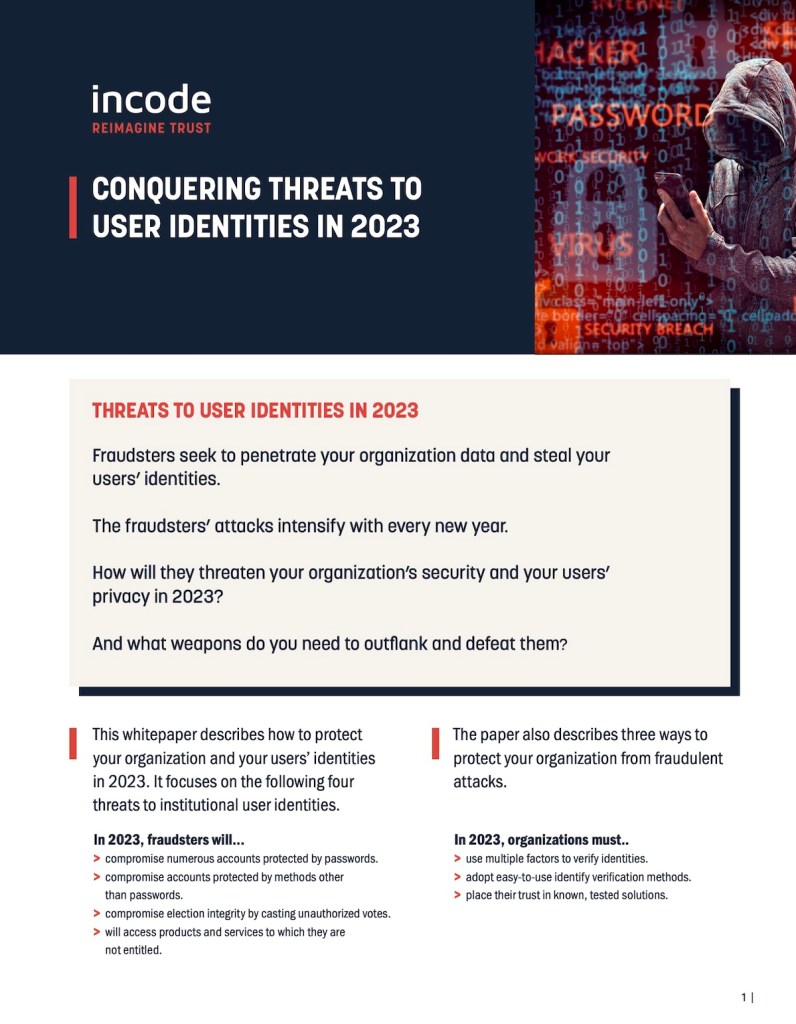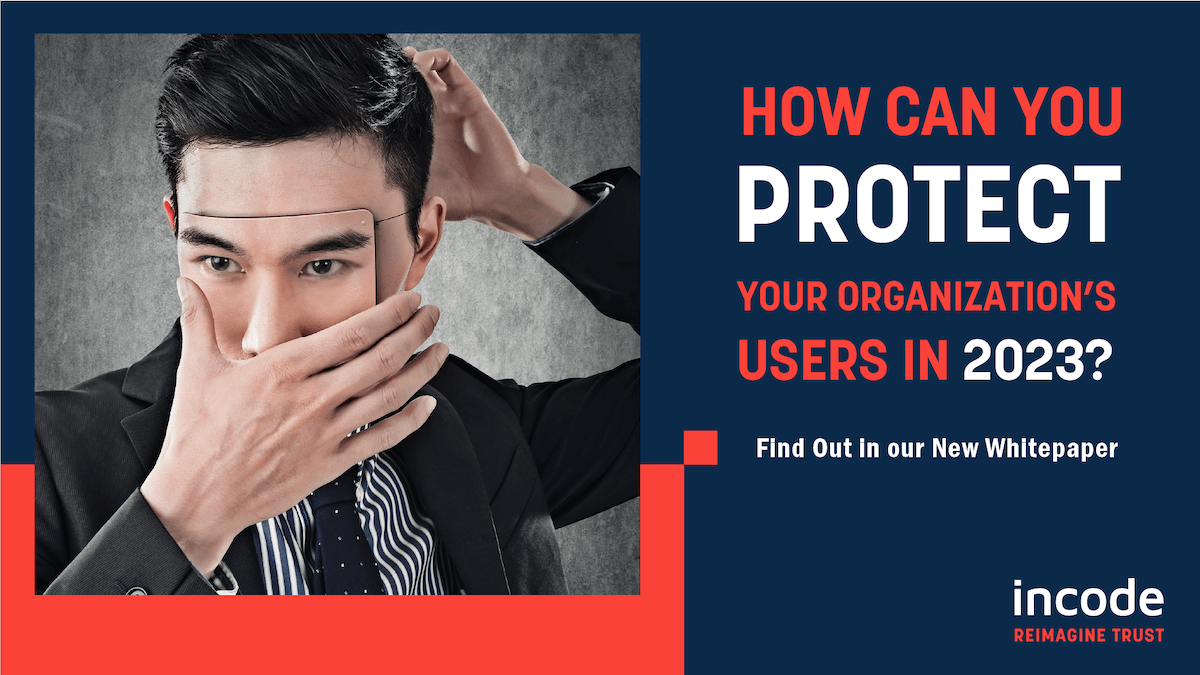How Can You Protect Your Organization’s Users in 2023?
Fraudsters seek to penetrate your organization’s data and steal your users’ identities. The fraudsters’ attacks intensify with every new year.
How will they threaten your organization’s security and your users’ privacy in 2023?
We have identified four threats to institutional user identities that you will face in 2023.
Fraudsters will compromise numerous accounts protected by passwords.
Many users will continue to secure their accounts with knowledge-based authentication, or passwords and personal identification numbers (PINs).
Many users will lose access to their accounts to fraudsters as a result.
Passwords are vulnerable because they can be stolen, can be guessed, and are often reused.
Fraudsters will compromise accounts protected by methods other than passwords.
Many companies will use other ways to authenticate users, including single sign-on (SSO), biometric authentication, token-based authentication using a physical device, certificate-based authentication, and multifactor authentication.
While these methods offer better protection than passwords, they are not foolproof. In 2023, people using these other methods will lose access to their accounts.
No security system is perfect, and there are multiple ways to breach non-password security methods. Biometrics, identity documents, and geolocation can all be spoofed.
Fraudsters will compromise election integrity by casting unauthorized votes.
Governments throughout the world will hold elections, striving to ensure that authorized individuals are allowed to vote, and unauthorized individuals are prohibited from voting.
Some citizens will distrust voting results because they believe—rightly or wrongly—that fraudulent voting occurred.
Today, some governments use outdated, haphazard, and substandard methods that fraudsters can exploit, or that can cast doubt on election results. So-called voting protections such as knowledge-based authentication (stating a voter’s name), written signatures, and even the presentation of driver’s licenses can all be compromised.
Underage fraudsters will access products and services to which they are not entitled.
Many people will need to comply with minimum age requirements. There are age restrictions for a variety of activities: voting, alcohol purchases, tobacco purchases, cannabis purchases, spray paint purchases, gambling, adult entertainment, social media account creation, automobile rentals, and others.
Underage people will fraudulently obtain these products and services.
Again, outdated, haphazard, and substandard methods to enforce age restrictions are often evaded. Determining that someone looks old enough is not reliable. Asking someone to state their age or type in a birthdate is not reliable, as evidenced by the number of 5-year-olds with social media accounts. And again, fraudsters can create fake driver’s licenses.
Forward-thinking organizations will thwart these four threats.
To counter these four threats, organizations need to scrap failed identity proofing methods and adopt new ways to verify and authenticate identities. However, there are three critical factors that a superior identity proofing solution must incorporate.
Would you like more details about the four threats to user identities?
Would you like to learn about the three critical features that an identity proofing solution must contain to counter these four threats?

If you would like to learn more, read Incode Technologies’ latest whitepaper, “Conquering Threats to User Identities in 2023″ whitepaper.
